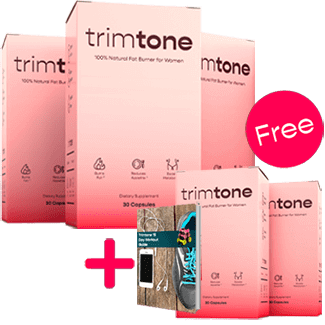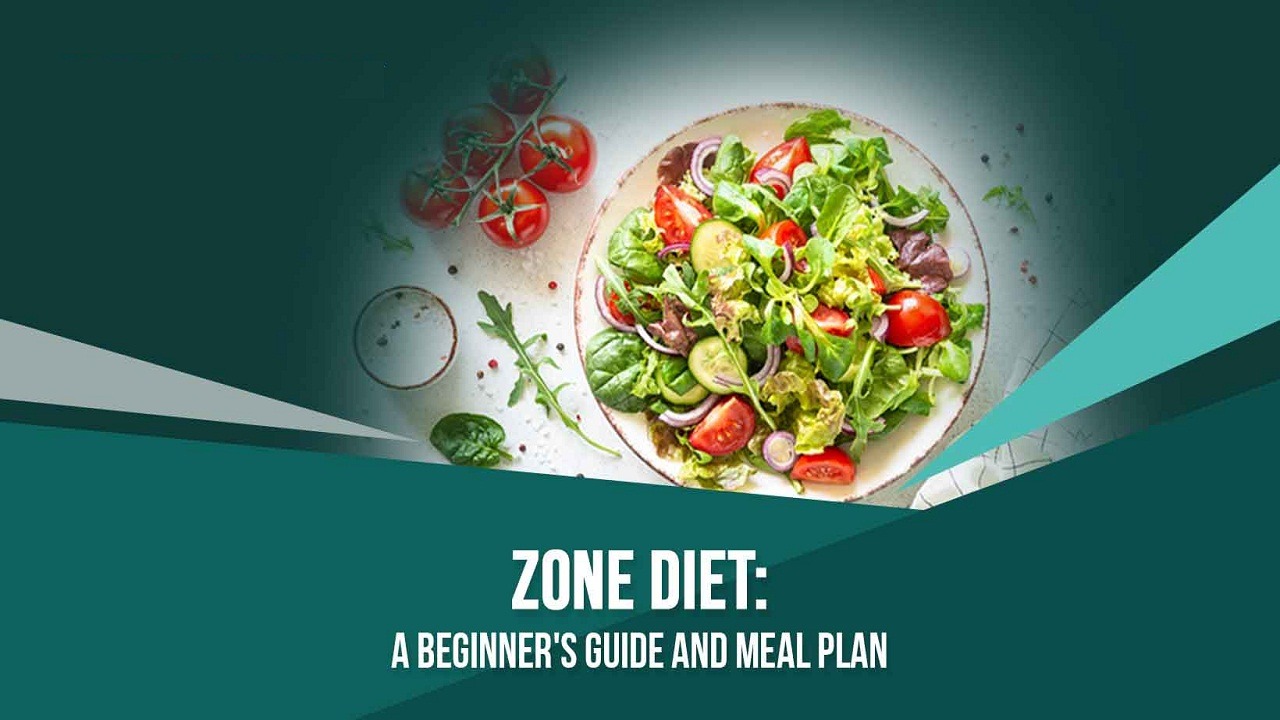Hey there, fellow health enthusiasts! I’m Lisa Rey, and I’m super excited to take you on a deep dive into the Zone Diet. If you’re looking to boost your energy, lose some weight, and feel amazing, then you’re in the right place. The Zone Diet isn’t just a meal plan; it’s a lifestyle that helps you achieve optimal health by balancing your meals in a way that stabilizes blood sugar levels and reduces inflammation. Ready to learn more? Let’s get started!
Also Check: 75 Day Hard Challenge | Transform Into the Best Version of Yourself
What is the Zone Diet?
Contents
- 1 What is the Zone Diet?
- 2 Why Choose the Zone Diet?
- 3 The Basics of the Zone Diet
- 4 Creating Your Zone Diet Meal Plan
- 5 Step 1: Calculate Your Protein Needs
- 6 Step 2: Divide Your Protein into Meals
- 7 Step 3: Add Carbs and Fats
- 8 Step 4: Choose Your Foods
- 9 Sample Zone Diet Meal Plan
- 10 Pros and cons of the Zone diet
- 11 Diet Comparison: Zone vs. Paleo vs. Mediterranean
- 12 Tips for Success on the Zone Diet
- 13 Supplement for the Zone Diet
- 14 What is Trimtone?
- 15 How Trimtone Complements the Zone Diet
- 16 How to Use Trimtone with the Zone Diet
- 17 My Experience
- 18 Frequently Asked Questions About the Zone Diet
- 19 The Science Behind the Zone Diet
- 20 Real-Life Success Stories
- 21 Common Pitfalls and How to Avoid Them
- 22 Tools and Resources for the Zone Diet
- 23 Delicious Zone Diet Recipes
- 24 1. Mediterranean Chicken Salad
- 25 Ingredients:
- 26 Instructions:
- 27 2. Baked Salmon with Quinoa and Veggies
- 28 Ingredients:
- 29 Instructions:
- 30 3. Greek Yogurt Parfait
- 31 Ingredients:
- 32 Instructions:
- 33 Final Thoughts
- 34 References
The Zone Diet was developed by Dr. Barry Sears, a biochemist, and it’s based on the principle of balancing your macronutrients—carbohydrates, proteins, and fats—in a specific ratio: 40% carbs, 30% protein, and 30% fat. This balance is designed to control the hormonal responses in your body, particularly insulin, which can help you maintain steady energy levels, reduce inflammation, and promote fat loss.
Why Choose the Zone Diet?
You might be wondering, why should I choose the Zone Diet over other diets out there? Here are some compelling reasons:
- Balanced Nutrition: Unlike many fad diets that focus on one macronutrient, the Zone Diet emphasizes a balanced intake of carbs, proteins, and fats.
- Steady Energy Levels: By controlling blood sugar levels, you can avoid the energy crashes that often come with high-carb diets.
- Reduced Inflammation: Chronic inflammation is linked to numerous health issues, including heart disease and diabetes. The Zone Diet helps reduce inflammation through its balanced approach.
- Sustainable Weight Loss: By promoting a healthy balance of hormones, the Zone Diet supports long-term weight management.
The Basics of the Zone Diet
Let’s break down the core principles of the Zone Diet so you can get a clear understanding of how it works.
- Macronutrient Balance: Every meal should consist of 40% carbohydrates, 30% protein, and 30% fat. This balance helps to control insulin levels and keep your energy steady.
- Caloric Intake: Women typically aim for around 1200 calories per day, while men aim for around 1500 calories. These numbers can be adjusted based on individual needs and activity levels.
- Meal Timing: Eat small, balanced meals every 4-5 hours, including a snack if needed, to keep your blood sugar levels stable.
- Food Choices: Focus on high-quality, nutrient-dense foods. Lean proteins, healthy fats, and low-glycemic carbs are your best friends on this diet.
Creating Your Zone Diet Meal Plan

Now that we’ve covered the basics, let’s get into the nitty-gritty of creating a meal plan. Here’s a step-by-step guide to help you design your own Zone Diet plan.
Step 1: Calculate Your Protein Needs
First, you need to determine your daily protein requirement. This is based on your lean body mass and activity level. Here’s a simple formula to get you started:
- Sedentary (little to no exercise): 0.5 grams of protein per pound of lean body mass.
- Moderately active (light exercise/sports 1-3 days a week): 0.6 grams per pound.
- Very active (moderate exercise/sports 3-5 days a week): 0.7 grams per pound.
- Extremely active (hard exercise/sports 6-7 days a week): 0.8 grams per pound.
For example, if you’re moderately active and have a lean body mass of 120 pounds, you would need around 72 grams of protein per day (120 x 0.6 = 72).
Step 2: Divide Your Protein into Meals
Once you know your daily protein requirement, divide it by the number of meals you plan to eat. For simplicity, let’s say you’re eating three meals and two snacks:
- Breakfast: 18 grams of protein
- Lunch: 18 grams of protein
- Dinner: 18 grams of protein
- Snacks: 9 grams of protein each
Step 3: Add Carbs and Fats
Now, it’s time to balance out your meals with carbohydrates and fats. For each meal, aim for the following ratios:
- Carbs: 40% of your meal
- Protein: 30% of your meal
- Fats: 30% of your meal
To make this easier, you can use the Zone Diet “block” method, where each block consists of:
- 1 block of protein: 7 grams
- 1 block of carbs: 9 grams
- 1 block of fat: 1.5 grams
So, if you need 18 grams of protein for breakfast, that’s 2.5 blocks of protein. You would then add 2.5 blocks of carbs and 2.5 blocks of fats to complete the meal.
Step 4: Choose Your Foods
Finally, it’s time to choose your food. Here are some examples of Zone-friendly foods to include in your meal plan:
- Proteins: Chicken breast, turkey, fish, tofu, low-fat dairy
- Carbs: Non-starchy vegetables, fruits, whole grains
- Fats: Olive oil, avocado, nuts, seeds
Sample Zone Diet Meal Plan
To give you a clearer picture, here’s a sample day on the Zone Diet.
Breakfast:
- 2 scrambled eggs (2 blocks protein)
- 1 slice of whole-grain toast (1 block of carbs)
- 1/2 cup berries (1 block carbs)
- 1 teaspoon olive oil (2 blocks fats)
Lunch:
- Grilled chicken salad with mixed greens, tomatoes, and cucumbers (3 blocks protein, 3 blocks carbs)
- 1 tablespoon olive oil (3 blocks fats)
Dinner:
- Baked salmon (3 blocks of protein)
- Steamed broccoli and carrots (3 blocks carbs)
- 1/4 avocado (3 blocks fats)
Snacks:
- Greek yogurt with a handful of almonds (2 blocks protein, 2 blocks carbs, 2 blocks fats)
Pros and cons of the Zone diet
| Pros | Cons |
| Promotes balanced macronutrient intake | Requires meticulous measurement of food portions |
| Emphasizes high-quality, unprocessed | Can be challenging to maintain when eating out or in social settings |
| foods | Requires frequent meals and snacks to maintain blood sugar levels |
| Can lead to sustainable weight loss | Initial adjustment period as the body adapts to new eating habits |
| Supports overall health and reduces | Initial adjustment period as body adapts to new eating habits |
| inflammation | Requires planning and preparation for meals |

Diet Comparison: Zone vs. Paleo vs. Mediterranean
Here’s a comparison between the Zone Diet and two other popular diets, the Paleo Diet and the Mediterranean Diet:
| Aspect | Zone Diet | Paleo Diet | Mediterranean Diet |
| Macronutrient Balance | Emphasizes balanced intake of carbs, protein, and fats in a 40-30-30 ratio | Focuses on whole foods similar to those available to Paleolithic humans, including lean meats, fish, fruits, vegetables, nuts, and seeds | Emphasizes plant-based foods, whole grains, legumes, and healthy fats, with moderate consumption of fish and poultry |
| Food Quality | Encourages high-quality, unprocessed foods | Prioritizes whole, unprocessed foods | Promotes whole, minimally processed foods |
| Weight Loss | This may result in weight loss due to the focus on whole foods and the elimination of processed foods | This may result in weight loss due to the focus on whole foods and elimination of processed foods | Can support weight loss due to emphasis on nutrient-dense foods and portion control |
| Sustainability | Requires consistent meal planning and measurement of food portions | May be sustainable for some, but could be challenging due to restrictions on dairy, grains, and legumes | Considered sustainable due to its variety and flexibility in food choices |
| Health Benefits | May reduce inflammation and improve overall health | Advocates claim it can improve digestion, increase energy levels, and lead to clearer skin | Associated with reduced risk of heart disease, improved brain health, and longevity |
Each diet has its unique approach and potential benefits, so it’s important to choose one that aligns with your preferences, lifestyle, and health goals.
Tips for Success on the Zone Diet
Starting a new diet can be challenging, but with these tips, you’ll be well on your way to success:
- Plan Ahead: Meal prepping can save you time and ensure you stick to your diet. Plan your meals and snacks for the week and prep what you can in advance.
- Stay Hydrated: Drink plenty of water throughout the day. Sometimes, we confuse thirst with hunger, leading to unnecessary snacking.
- Listen to Your Body: Pay attention to how your body responds to different foods and adjust accordingly. Everyone is different, and what works for one person might not work for another.
- Stay Active: While the Zone Diet can help you lose weight, combining it with regular exercise will enhance your results and improve your overall health.
- Seek Support: Join a community or find a buddy who’s also on the Zone Diet. Having support can keep you motivated and accountable.
Supplement for the Zone Diet
First things first, if you’re following the Zone Diet, you know it’s all about balancing your meals with the right proportions of carbs, protein, and fats to control insulin levels and optimize your health. While the Zone Diet provides a solid foundation, sometimes we need a little extra help to boost our metabolism and keep our energy levels high. That’s where Trimtone comes in!
TRIMTONE

NEW! 100% Natural Fat Burner For Women
- Burns fat
- Reduces appetite
- Boosts your metabolism
- 100% Natural Ingredients
- Money Back Guarantee
- Free Delivery
- GMP Certified
- Made In The USA
What is Trimtone?
Trimtone is a natural fat burner specifically designed for women. It’s packed with powerful ingredients like green tea, caffeine, and glucomannan, which work together to help you burn fat, suppress your appetite, and keep your metabolism revving.
How Trimtone Complements the Zone Diet
- Boosts Metabolism: The Zone Diet emphasizes eating the right amount of macronutrients to maintain steady insulin levels. Trimtone’s thermogenic properties can give your metabolism a kick, helping you burn more calories even when you’re resting.
- Energy Support: With the Zone Diet, you’re already fueling your body with balanced meals, but Trimtone’s caffeine content provides that extra energy boost to power through your workouts and daily activities.
- Appetite Control: One of the biggest challenges of any diet is controlling cravings. Trimtone includes glucomannan, a dietary fiber that expands in your stomach, helping you feel fuller for longer and making it easier to stick to your Zone-friendly meals.
How to Use Trimtone with the Zone Diet
Using Trimtone is super simple. Just take one capsule each morning with a glass of water before breakfast. This will help set the tone for your day, boosting your metabolism and keeping those hunger pangs at bay.
My Experience
Since I started incorporating Trimtone into my Zone Diet routine, I’ve noticed a significant difference in my energy levels and appetite control. The balanced meals of the Zone Diet combined with the fat-burning and appetite-suppressing benefits of Trimtone have helped me stay on track and feel great.
Frequently Asked Questions About the Zone Diet
1. Can I follow the Zone Diet if I’m vegetarian or vegan?
Absolutely! The Zone Diet can be adapted for vegetarians and vegans. Focus on plant-based proteins like tofu, tempeh, legumes, and plant-based protein powders. Just ensure you’re getting a good balance of macronutrients.
2. Is the Zone Diet suitable for people with diabetes?
Yes, the Zone Diet can be beneficial for people with diabetes because it helps to stabilize blood sugar levels. However, it’s always best to consult with your healthcare provider before starting any new diet plan.
3. Can I drink alcohol on the Zone Diet?
Moderation is key. While it’s best to limit alcohol consumption, occasional drinking is allowed. Opt for dry wines or spirits mixed with low-sugar mixers, and always be mindful of your overall calorie and carb intake.
4. How soon will I see results on the Zone Diet?
Results vary from person to person, but many people start to see and feel improvements within the first few weeks. Consistency is crucial, so stick with it and give your body time to adjust.
5. Can I eat out while on the Zone Diet?
Yes, you can eat out, but it requires a bit of planning. Choose dishes that are balanced in protein, carbs, and fats, and don’t be afraid to ask for modifications to fit your dietary needs. For example, request grilled chicken instead of fried, and opt for vegetables instead of fries.
The Science Behind the Zone Diet
Understanding the science behind the Zone Diet can help you appreciate why it works. The diet focuses on controlling the hormone insulin, which is responsible for storing fat. By balancing your macronutrient intake, you can keep insulin levels in check, which helps your body burn fat more efficiently.
Additionally, the Zone Diet emphasizes the importance of reducing inflammation. Chronic inflammation can lead to various health issues, including heart disease and diabetes. The anti-inflammatory benefits of the Zone Diet come from its balanced macronutrient ratios and the inclusion of healthy fats and low-glycemic carbs.
Real-Life Success Stories
Hearing real-life success stories can be incredibly motivating. Here are a few examples of people who have thrived on the Zone Diet:
- Sarah’s Transformation: Sarah struggled with weight gain and low energy levels. After adopting the Zone Diet, she lost 30 pounds and reported feeling more energetic and focused throughout the day.
- Mike’s Health Turnaround: Mike was diagnosed with pre-diabetes and needed to make a change. By following the Zone Diet, he not only lost weight but also improved his blood sugar levels and overall health. His doctor was impressed with the dramatic improvements, and Mike felt more empowered to maintain a healthier lifestyle.
- Lisa’s Energy Boost: Lisa, a busy mom and entrepreneur, was constantly tired and found it hard to keep up with her hectic schedule. The Zone Diet helped her stabilize her energy levels, improve her focus, and lose those stubborn last 10 pounds.
These success stories are just a few examples of how the Zone Diet can positively impact your life. By balancing your meals and choosing nutrient-dense foods, you can achieve similar results.
Common Pitfalls and How to Avoid Them
Like any diet, the Zone Diet can come with its challenges. Here are some common pitfalls and tips on how to avoid them:
- Skipping Meals: It’s important to eat regularly to keep your blood sugar levels stable. Skipping meals can lead to energy crashes and overeating later in the day. Plan your meals and snacks ahead of time to avoid this pitfall.
- Overcomplicating Meal Prep: The Zone Diet can seem complex with its specific ratios and block method. Keep it simple by sticking to basic, whole foods and gradually learning the block system. Over time, it will become second nature.
- Not Measuring Portions: Eyeballing portions can lead to inaccurate macronutrient ratios. Use a kitchen scale or measuring cups, especially when you’re just starting out, to ensure you’re getting the right balance of carbs, proteins, and fats.
- Ignoring Healthy Fats: Fats are a crucial part of the Zone Diet, but many people are still wary of them. Remember to include healthy fats like olive oil, avocado, and nuts in your meals to stay within the 30% fat ratio.
- Neglecting Variety: Eating the same foods every day can lead to nutrient deficiencies and boredom. Mix it up by trying new recipes and incorporating a wide range of fruits, vegetables, proteins, and fats into your diet.
Tools and Resources for the Zone Diet
Having the right tools and resources can make following the Zone Diet much easier. Here are some recommendations:
- Books: Dr. Barry Sears has written several books on the Zone Diet, including “The Zone,” “Mastering the Zone,” and “The Anti-Inflammation Zone.” These books provide in-depth information and additional meal plans.
- Apps: There are various apps designed to help you track your macronutrient intake and plan your meals according to the Zone Diet principles. Apps like “Zone Diet Meal Planner” and “Zone Diet Blocks” can be very helpful.
- Websites and Forums: Join online communities and forums where you can share tips, recipes, and support with others following the Zone Diet. Websites like ZoneDiet.com offer a wealth of resources and information.
- Meal Delivery Services: If you’re short on time, consider subscribing to a meal delivery service that offers Zone Diet-compliant meals. This can take the guesswork out of meal prep and ensure you’re sticking to the diet.
TRIMTONE

NEW! 100% Natural Fat Burner For Women
- Burns fat
- Reduces appetite
- Boosts your metabolism
- 100% Natural Ingredients
- Money Back Guarantee
- Free Delivery
- GMP Certified
- Made In The USA
Delicious Zone Diet Recipes
To keep things exciting, here are a few Zone Diet-friendly recipes that are easy to prepare and packed with flavor:
1. Mediterranean Chicken Salad
Ingredients:
- 3 oz grilled chicken breast (3 blocks of protein)
- 2 cups mixed greens (1 block carbs)
- 1/2 cup cherry tomatoes (1 block carbs)
- 1/2 cucumber, sliced (1 block carbs)
- 1/4 cup crumbled feta cheese (1 block protein)
- 1 tablespoon olive oil (3 blocks fats)
- Lemon juice, salt, and pepper to taste
Instructions:
- Toss the mixed greens, cherry tomatoes, and cucumber in a large bowl.
- Top with grilled chicken breast and crumbled feta cheese.
- Drizzle with olive oil and lemon juice, and season with salt and pepper.
2. Baked Salmon with Quinoa and Veggies
Ingredients:
- 4 oz baked salmon (4 blocks of protein)
- 1/2 cup cooked quinoa (2 blocks carbs)
- 1 cup steamed broccoli (1 block carbs)
- 1/2 cup cherry tomatoes (1 block carbs)
- 1 tablespoon olive oil (3 blocks fats)
- Lemon wedges, salt, and pepper to taste
Instructions:
- Preheat the oven to 375°F (190°C).
- Place the salmon on a baking sheet, season with salt and pepper, and bake for 15-20 minutes.
- In a bowl, combine cooked quinoa, steamed broccoli, and cherry tomatoes.
- Drizzle with olive oil and toss to combine.
- Serve the salmon with the quinoa and veggie mix, and garnish with lemon wedges.
3. Greek Yogurt Parfait
Ingredients:
- 1 cup Greek yogurt (2 blocks protein)
- 1/2 cup mixed berries (2 blocks carbs)
- 1 tablespoon chopped nuts (3 blocks fats)
- 1 teaspoon honey (optional, adjust as needed for carb balance)
Instructions:
- Layer the Greek yogurt and mixed berries in a glass or bowl.
- Sprinkle with chopped nuts.
- Drizzle with honey if desired.
Final Thoughts
The Zone Diet is more than just a way to lose weight; it’s a holistic approach to eating that can improve your overall health, boost your energy levels, and reduce inflammation. By following the principles of balanced macronutrients and focusing on high-quality foods, you can achieve sustainable results and feel your best.
Remember, consistency is key, and it’s important to listen to your body and make adjustments as needed. Whether you’re new to the Zone Diet or looking to refine your approach, this guide provides a solid foundation to help you succeed.
So, are you ready to enter the Zone and transform your health? Let’s do this together! If you have any questions or need more tips, feel free to reach out. I’m here to support you on your journey to optimal health and wellness.
Happy eating!
References
· The Zone Diet – Dr. Barry Sears Official Site
· Harvard Health Publishing – The truth about fats: the good, the bad, and the in-between
· PubMed – Inflammation and chronic disease
· Mayo Clinic – Diabetes diet: Create your healthy eating plan
